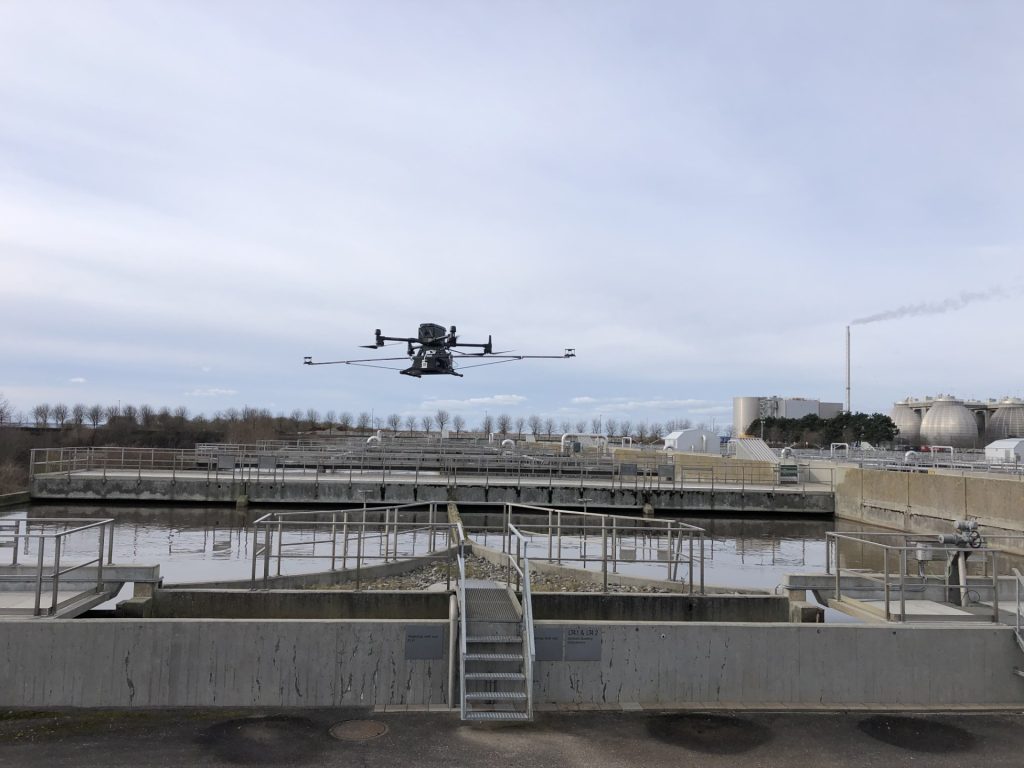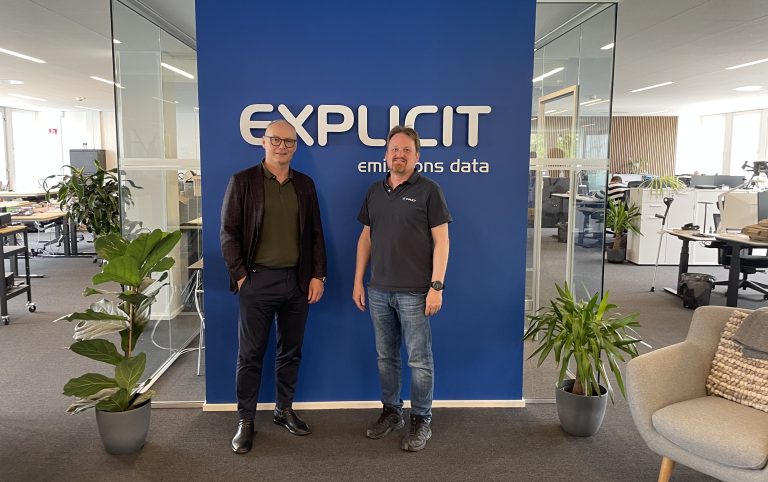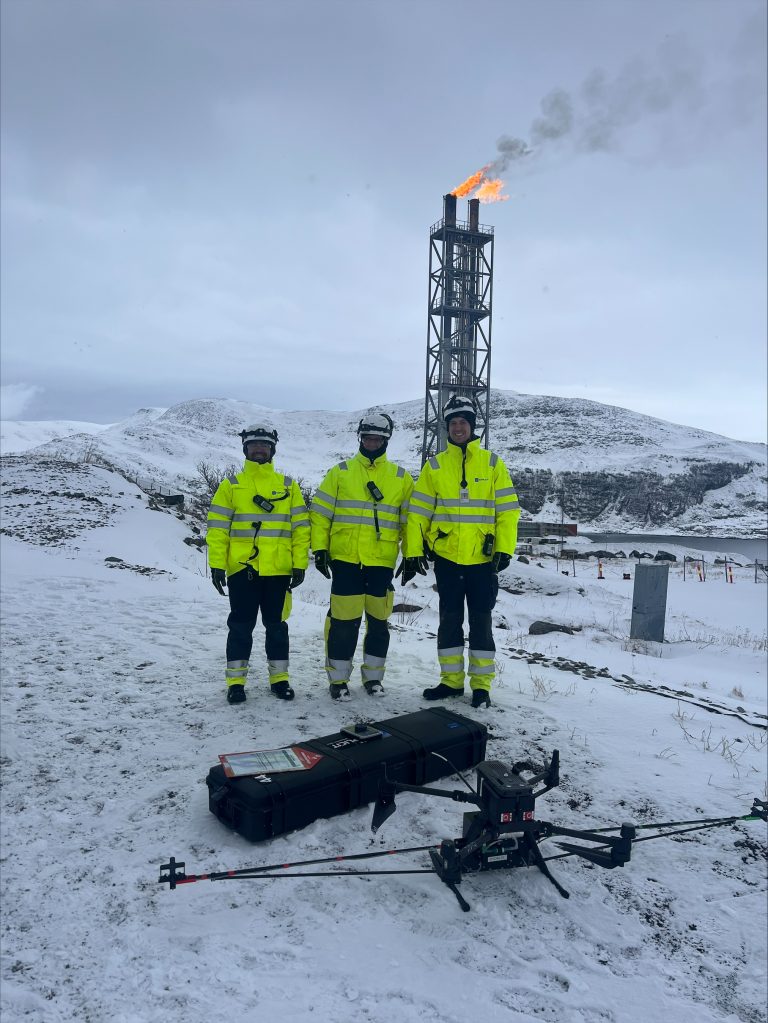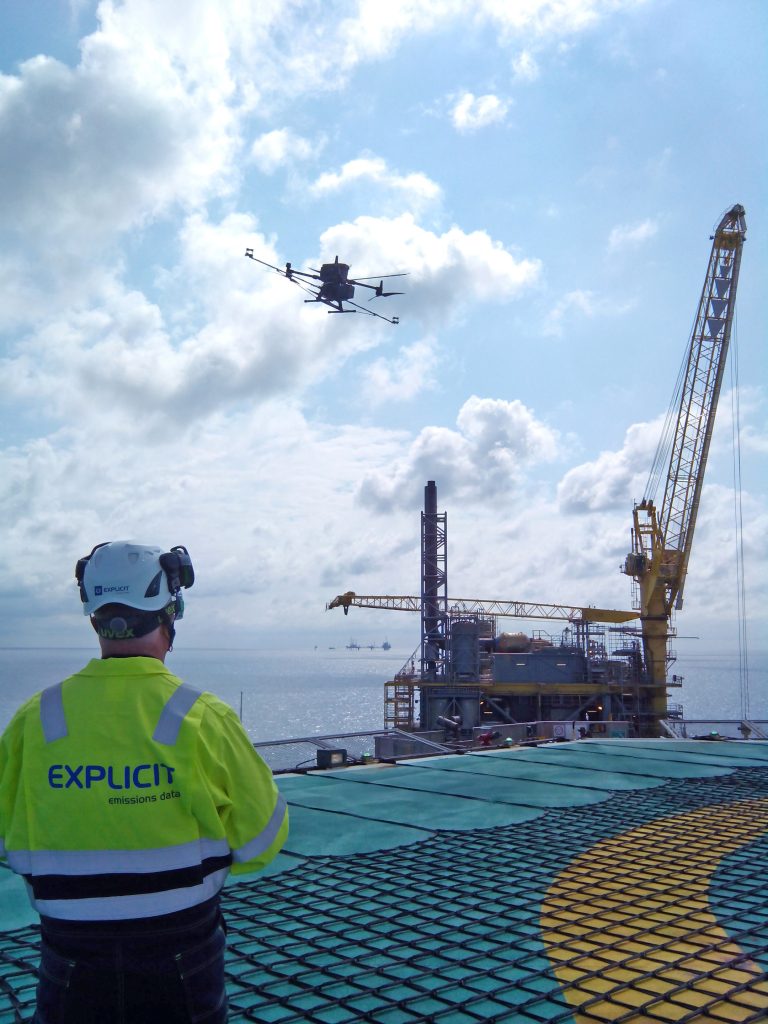The final report from the two-year AWAIRE research project has just been published by the Ministry of Environment of Denmark, confirming the value of Explicit’s innovative drone-based technology for quantifying nitrous oxide (N₂O) emissions with high precision – an essential step in addressing climate-critical emissions from wastewater treatment.
Tackling a potent climate challenge
N₂O is 273 times more potent than CO₂ and can account for up to 78% of a wastewater treatment plant’s operational carbon footprint. Yet, reliably measuring it remains a challenge due to its dynamic release across large, open-air facilities.
To address this challenge, the AWAIRE project, funded by the Danish Environmental Technology Development Program (MUDP) and led by Explicit in collaboration with DTU Sustain, BIOFOS and Krüger A/S, focused on adapting Explicit’s Drone Flux Measurement (DFM) technology – originally developed for methane quantification – to quantify N₂O emissions with high precision.
Key findings
The project conducted 41 field surveys at BIOFOS Avedøre, comparing DFM results with other established technologies.
The results clearly showed that DFM method produced comparable emission rates, confirming the accuracy and robustness of Explicit’s drone-based remote sensing method. This alignment underscores the DFM’s capability as a reliable, field-ready technology for capturing dynamic N₂O emission events from wastewater treatment operations.
DFM’s strength lies in its ability to capture total plant-wide emissions, even in areas where other methods struggle, such as tickling filters or surface-aerated tanks. This makes it particularly useful for:
- Verifying plant-wide N₂O emission levels
- Identifying emission hotspots
- Supporting operational changes to reduce greenhouse gas output
- Tracking the effect of mitigation efforts over time
Accreditation and recognition
In April 2025, Explicit’s DFM method designed for nitrous oxide received accreditation under DS/EN ISO/IEC 17025:2017, confirming its compliance with international standards for testing and calibration laboratories.
In addition, the usability and performance of the DFM method were highlighted in another the Danish EPA report, confirming it as a key tool for addressing climate-critical emissions from the wastewater sector.
The newly published report summarises methods, field results, and practical recommendations.
Read the full AWAIRE project report (PDF).




